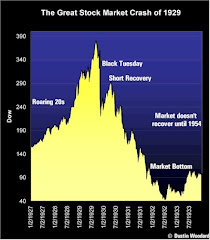Public Pensions have toppled and society needs to reassemble pensions for employees in the public sector. The next largest cost associated with government is the cost of benefits.
Costs of running government pensions and benefits plans are no longer sustainable. The problems that have been created as a result of trying to sustain an unsustainable system are problems that will potentially topple all of our society. It needs to be restructured but how?
Politicians are the ones who will have to change the rules that govern how our public sector pension plans. It is a difficult task that cannot be done over night but must begin now.
For politicians the task will be daunting. Part of the problem is that the system is very hard to understand and it is guarded by a public service very protective of their entitlements. Politicians cannot get the perspective and information that they need in order to make informed decisions about the changes that are needed.
Some tools in the form of reports have been created by Canada's economic think tanks and business lobby groups. Many of these policy reports are very informative and contain the information politicians need to change the system but they are too detailed for he average person. The reports are written by professionals who have a technical insight into the problems and can explain them but describe them in technical terms. These technical terms can be very confusing for the non-expert.
Most of these report contain very broad policy statements about the problem and have identified the problem but do not provide the specific details needed to proceed with changes.
What I will attempt to do here is to define the problem and make it easy for the non-expert to understand.
Issues
The Cost of Pensions and Benefits
For most of our government organizations the single biggest cost of operating expenses is the wages, benefits and pensions packages. These costs vary at different types of government operations. But for all of them the single biggest expense they have is the compensation package.
City Hall - The costs of the compensation package for City Hall is usually close to 50% of total operating expenses. This makes it the single largest expense item.
Hospitals - For most hospitals the compensation package is %60 to 70% of total expenses.
Universities - The cost to Universities of the compensation package is in the 60% range
School Boards - For School Boards the compensation package accounts for over 75% of total expenses.
Benefits
Benefits are an associated cost of hiring the public sector. The include the typical health and dental benefits but also have a component that makes them difficult to understand in unpaid benefits and future liability benefits.
In order to find ways to save money the best comparison is usually to be found by contrasting the public sector against the private sector. A benchmark comparison with other government organizations will not provide a realistic analysis because the benefits negotiated have already been negotiated against other government groups' settlements.
The CFIB in their report Wage Watch found for example a difference in compensation between the Federal Government and the private sector of 41.7%. This means that the federal government pays a compensation package 41.7% richer than the private sector. Some of this is salary (17.3%)but the biggest portion is for pensions and benefits.
Some of the benefit differences that account for the wide variation between the public sector and the private sector are:
Paid Working Hours - Usually the work week within the public sector is shorter than the private sector. Compare a average 34 work week in the public sector with a private industry standard of 40.4 hours.
Paid Vacation - The vacation time off negotiated by public sector unions far outstrips the private sector. For example at the City of Hamilton ...
Paid Sick Days - The standard in the private industry is if needed you are able to take sick days. Sick days are allocated on an annal basis and if not used are not carried over. In the public sector these days are actually paid. They are also carried over to the next year. They accumulate by the concept that if you don't use them this year they accumulate at a full days pay rate. They can then be carried into the next year. If not used for the next year they can be accumulated and carried forward again. The cumulative effect of this policy is that many public sector workers have a large accumulation of these days paid out to them at retirement. Find out from your Human Resources department what some of the payouts for accumulated sick days have been.
For example: The City of Hamilton has built up an accumulation of these days payable to employees of over $36,000,000 dollars. This is the equivalent of a one time 4% tax hike.
Retirement or Retiree Benefits - These benefits are paid to retirees who have not yet reached the age of 65. The benefits are very generous compared to the working benefits of the private sector. Most private businesses provide very limited and basic retiree benefits. By bringing in line the level of these benefits substantial cost savings can be obtained.
For example: The City of Hamilton offers retiree benefits that have accumulated a liability of over $ 84,000,000.
Sunday, January 4, 2009
Subscribe to:
Post Comments (Atom)



No comments:
Post a Comment